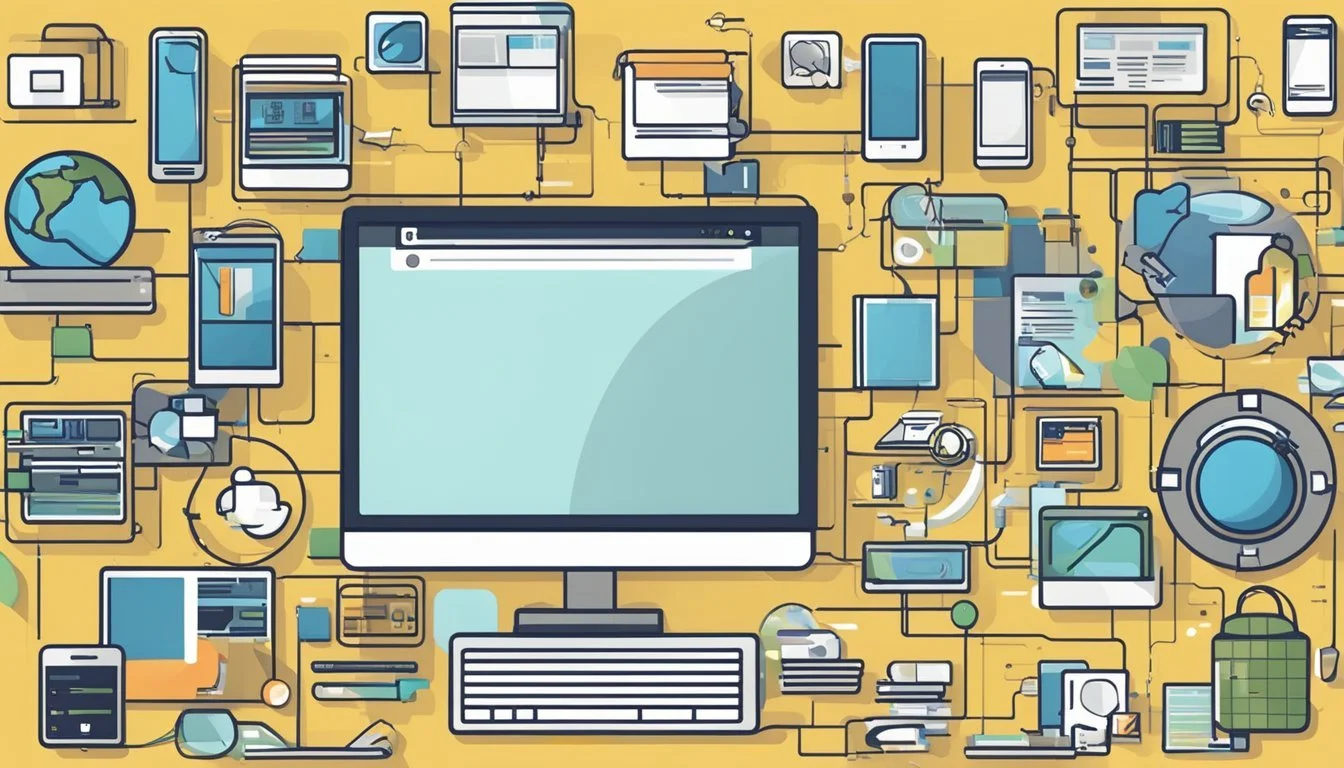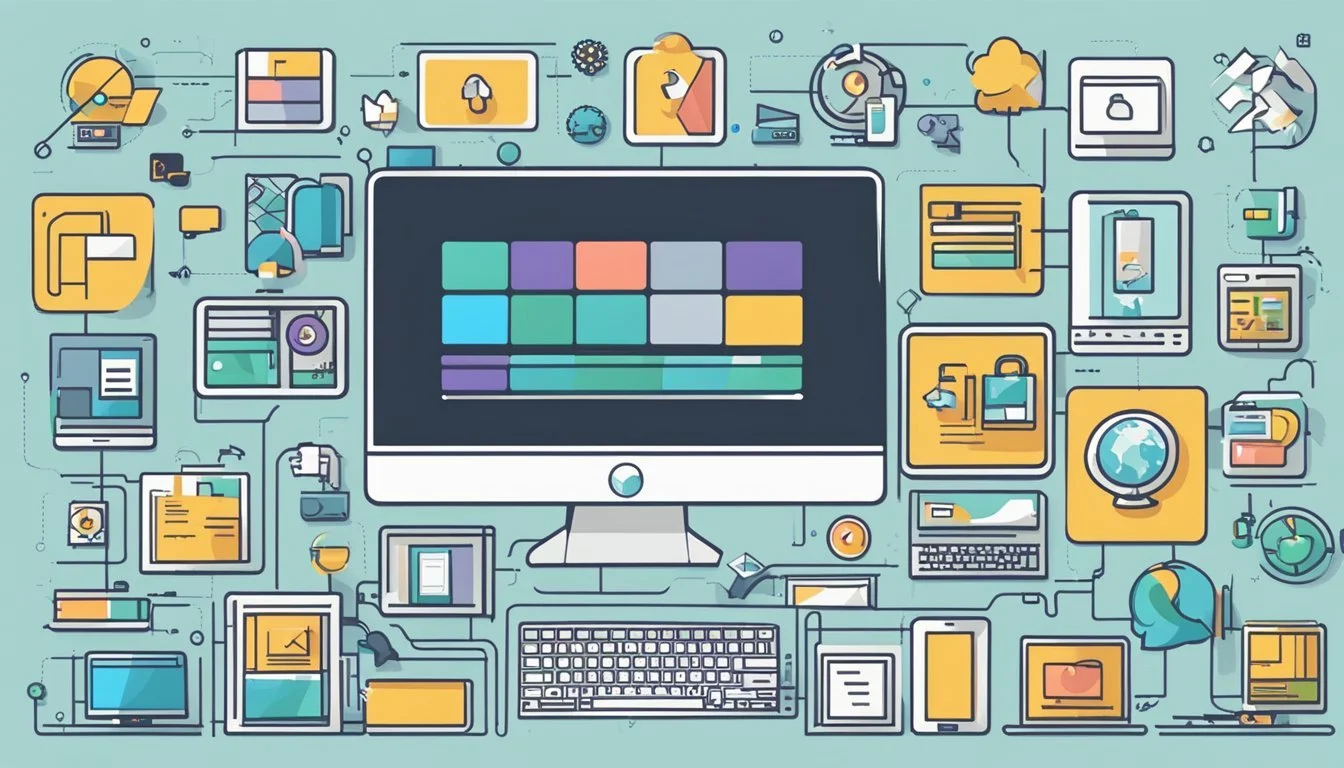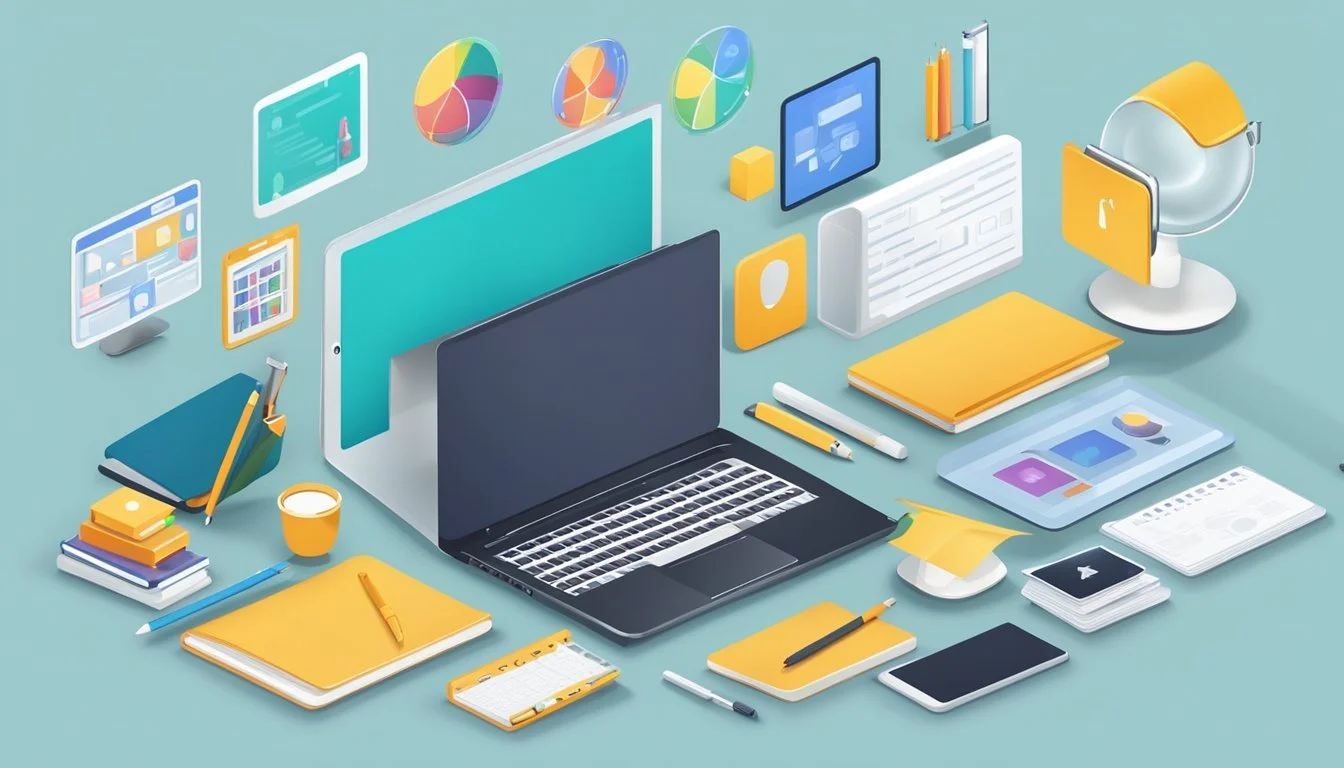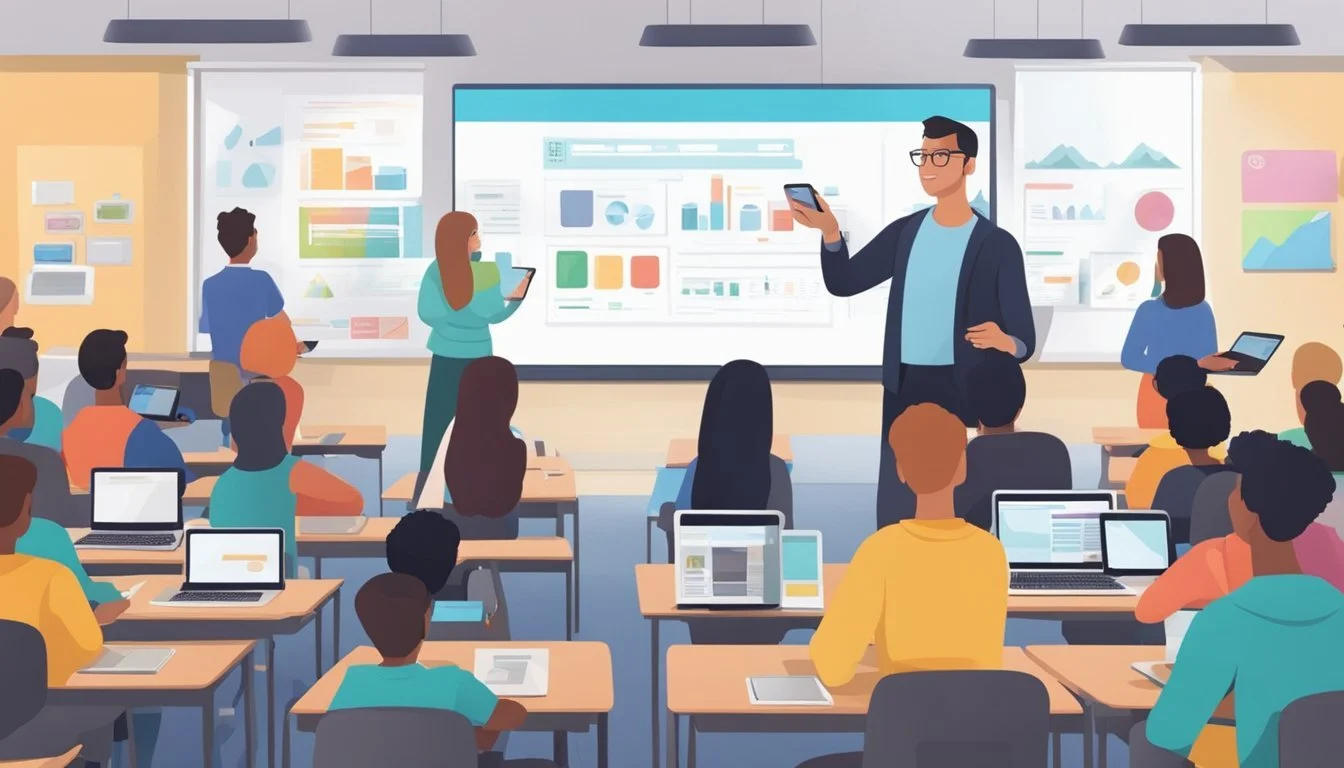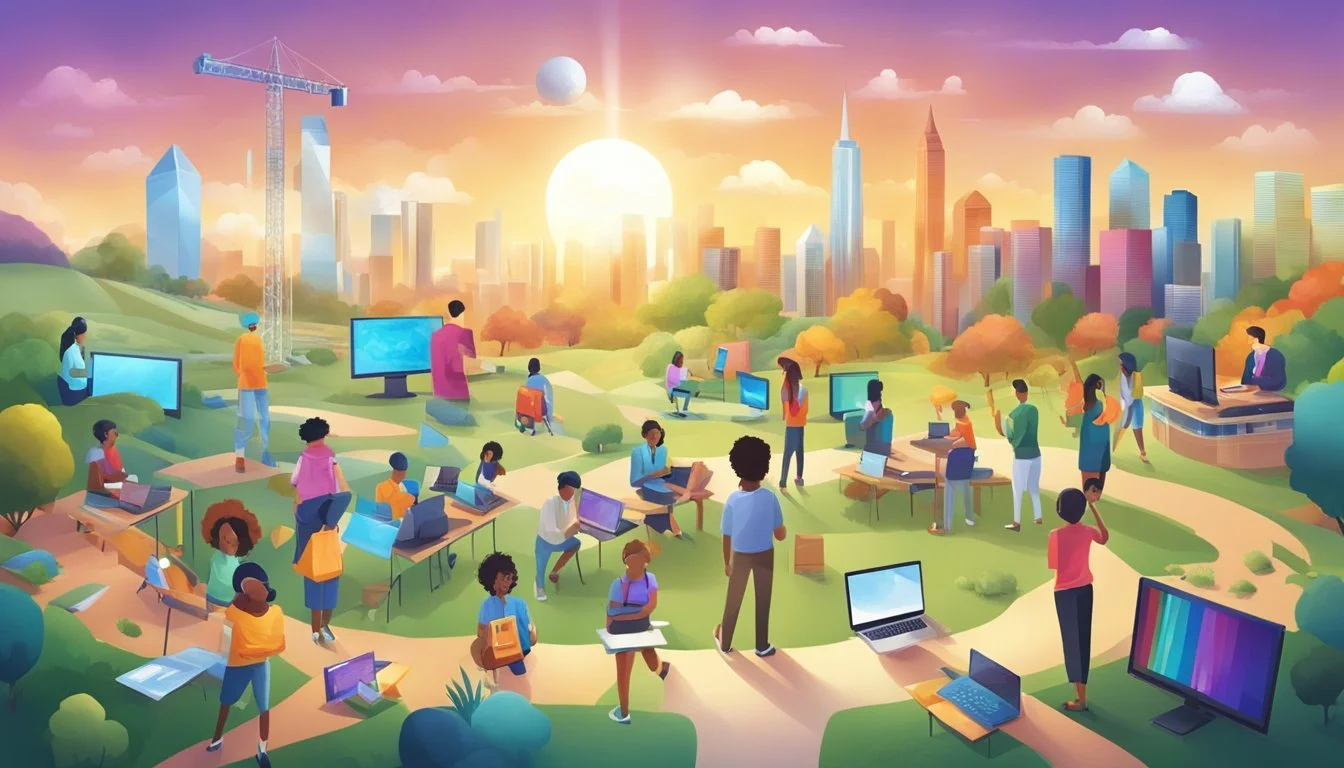Free Land in the Digital Age
Accessing Online Resources and Tools
Exploring the modern avenues for acquiring free land has never been more straightforward, thanks to a plethora of online resources and tools. Numerous state and local governments in the U.S. incentivize new residents by offering parcels of land, particularly in rural areas. Minnesota stands out with towns like Richland and Claremont offering not just land, but additional benefits like free electrical hookups and building permits.
For those interested in homesteading or developing new properties, the digital age provides an array of resources to streamline the search process. Websites and online classifieds are valuable tools, and governmental databases also offer opportunities for those willing to use the land for specific purposes such as farming. While the options are abundant, the key lies in researching effectively to find programs that align with one's lifestyle and goals.
Understanding the Digital Age
The Digital Age has reshaped society with rapid advancements in technology and artificial intelligence (AI). This transformation impacts various aspects of daily life, influencing communication, productivity, and even cultural norms.
Defining the Digital Age
The Digital Age refers to the period starting from the late 20th century and extending into the 21st century, marked by the advent and proliferation of digital technology. Computers, the internet, and mobile devices have become central to communication, work, and entertainment. The term encapsulates the shift from analog and mechanical technologies to those based on digital formats.
A significant attribute of the Digital Age is the accessibility of information. Data is stored, shared, and processed at unprecedented speeds, making knowledge more available than ever. This era emphasizes connectivity and interactivity through various platforms like social media, websites, and apps, creating a global network.
The Influence of AI and Technology on Society
Artificial intelligence and other technological innovations have a profound impact on the Digital Age. AI algorithms power many of today's key applications, driving efficiency and automation in industries like healthcare, finance, and manufacturing. From virtual assistants like Siri and Alexa to recommendation systems on streaming services, AI affects how people interact with technology daily.
Moreover, machine learning and big data analytics allow organizations to gain deeper insights and make more informed decisions. However, this technological progression also raises ethical concerns regarding privacy, security, and employment. Balancing these advancements with responsible usage and regulation is crucial for maximizing the benefits of the Digital Age.
Digital Resources for Education
With the rise of technology, digital resources have become crucial in enhancing educational experiences for both educators and students. These tools offer various ways for learners to engage with content and for teachers to deliver lesson plans more effectively.
Online Platforms and Virtual Classrooms
Online platforms such as Khan Academy, Coursera, and edX provide structured educational content. These platforms often include courses designed by renowned institutions and allow students to learn at their own pace.
Virtual classrooms, like those offered by Google Classroom and Microsoft Teams, facilitate real-time interaction between educators and students. They support video lectures, discussions, and shared resources, creating an environment that mimics traditional classrooms.
Multimedia Content and Interactive Simulations
Multimedia content plays a significant role in modern education. Resources like YouTube Education, TED-Ed, and e-textbooks provide visual and auditory elements that enhance understanding.
Interactive simulations, such as those from PhET Interactive Simulations and Labster, offer hands-on learning experiences. These tools allow students to experiment with different scenarios in a controlled digital environment, aiding the comprehension of complex concepts.
Accessing Educational Content Online
Access to educational content online is more diverse than ever. Websites like Quizlet offer flashcards and study sets for a variety of subjects, enabling students to review and memorize information efficiently.
Additionally, massive open online courses (MOOCs) have democratized access to education. Platforms like Udemy and FutureLearn offer both free and paid courses, catering to a wide range of interests and skill levels. These resources empower learners by providing high-quality content accessible from anywhere in the world.
Enhancing Learning through Digital Tools
Digital tools are transforming education by allowing personalized learning experiences and providing real-time feedback to students. The integration of innovative technologies is helping to keep students engaged and interactive while making education more adaptive to individual needs.
Personalized Learning and Real-Time Feedback
Personalized learning tailors educational experiences to each student's strengths, needs, and interests. Digital tools like adaptive learning platforms adjust content in real time based on the student's progress. For example, artificial intelligence (AI) algorithms analyze performance data to recommend specific tasks or resources.
Real-time feedback plays a crucial role in modern education. Digital tools such as interactive quizzes and online assessments provide immediate responses. This allows students to recognize and address their learning gaps quickly. Gamification and digital badging also contribute by motivating and rewarding students as they achieve mastery in various subjects.
Building Digital Competencies
Building digital competencies is crucial for both personal and professional growth. This involves developing skills in digital literacy, critical thinking, cybersecurity, online safety, and media literacy.
Digital Literacy and Critical Thinking
Digital literacy involves the ability to find, evaluate, and use digital content effectively. This skill is essential for navigating the vast amount of information available online.
Critical thinking enhances digital literacy by helping individuals question and analyze digital information. They learn to distinguish between credible and unreliable sources and develop the ability to use digital tools to solve complex problems.
Together, these skills enable people to engage meaningfully in an increasingly digital world.
Cybersecurity, Online Safety, and Data Privacy
Cybersecurity is critical for protecting personal and professional information from unauthorized access. Knowledge in this area involves understanding various threats and implementing measures to safeguard digital assets.
Online safety is about protecting oneself from online threats such as phishing, malware, and cyberbullying. It includes practices like strong password management and recognizing suspicious activities.
Data privacy ensures that personal information is handled according to legal and ethical standards. This competency requires awareness of how data is collected, stored, and shared online, and knowing how to control one's own data footprint.
Media Literacy in the Modern Media Landscape
Media literacy involves the ability to critically analyze and create content across various media platforms. It includes understanding the different forms of media, their purposes, and potential biases.
In the modern media landscape, it is crucial to discern between factual reporting and misinformation. Media literacy empowers individuals to critically evaluate media messages and participate in media production responsibly.
These skills help individuals become informed citizens, capable of navigating an ever-evolving media environment.
Supporting Educators and Students
To navigate the complexities of the digital age, educators and students require robust support structures. This includes targeted professional development, access to comprehensive lesson resources, and strategies to foster responsible digital citizenship.
Professional Development and Teacher Training
Professional development is crucial for educators to stay current with evolving digital tools and platforms. Training programs should include hands-on sessions with Learning Management Systems (LMSs), video conferencing tools, and online assessment platforms. Competence with these tools enables teachers to facilitate engaging online classes.
Example Training Components:
LMS Navigation: Understanding features and functionality.
Video Conferencing Tools: Mastery of platforms like Zoom or Google Meet.
Assessment Platforms: Leveraging tools like Kahoot! for interactive quizzes.
These skills help educators implement digital curricula effectively and boost student engagement.
Lesson Plans, Worksheets, and Classroom Activities
Access to high-quality lesson plans and classroom activities is essential. Resources like the NEA and Google Learning offer comprehensive collections that span various subjects, including math, literacy, and science. These resources often include ready-to-use worksheets and interactive activities.
Notable Resources:
NEA Collections: Diverse resource and lesson plan collections.
Google Workspace for Education: Tools for creating and sharing digital worksheets.
These resources help teachers save time and ensure that lessons are well-structured and aligned with ISTE standards.
Strategies for Effective Digital Citizenship
Teaching digital citizenship is critical in today’s technology-driven world. This includes educating students about online etiquette, privacy, and the ethical use of information. Implementing strategies to promote responsible online behavior helps students become informed, conscientious digital citizens.
Key Strategies:
Privacy Education: Understanding data protection and personal privacy.
Online Etiquette: Promoting respectful and constructive online communication.
Ethical Information Use: Teaching the importance of citing sources and avoiding plagiarism.
Emphasizing these strategies prepares students to navigate the digital landscape responsibly and ethically.
Innovative Teaching Techniques
In the digital age, educators utilize technology to enhance teaching methods and engage students. This section explores problem-solving and project-based learning, and pedagogy applying digital tools.
Problem-Solving and Project-Based Learning
Problem-solving and project-based learning (PBL) emphasize practical, real-world applications of knowledge. These methods encourage students to engage deeply with content by tackling complex problems and projects.
Educators integrate these techniques by assigning tasks that require critical thinking and creativity. For example, students might be asked to design a sustainable city using digital simulations, promoting both teamwork and innovation.
PBL fosters skills such as collaboration, communication, and analytical thinking. Utilizing digital resources like online collaboration tools and virtual labs, teachers can facilitate group projects where students can work remotely, share ideas, and provide peer feedback. This approach not only enhances understanding of the subject matter but also prepares students for challenges beyond the classroom.
Pedagogy and the Application of Digital Tools
The integration of digital tools into pedagogy transforms traditional teaching methods, making learning more interactive and engaging. Educators use various digital platforms to create a dynamic learning experience.
Tools like interactive whiteboards, educational apps, and virtual reality (VR) are incorporated into lessons, enabling a multisensory approach to learning. For instance, VR can be used to take students on virtual field trips, providing immersive experiences that a traditional classroom setting cannot.
Digital formative assessment tools allow for real-time feedback, helping educators identify areas where students may need additional support. Online discussion forums and video conferencing tools facilitate continuous dialogue, making it easier for students to seek help and collaborate outside of school hours.
By leveraging these digital tools, educators can create a more inclusive and adaptive learning environment that meets the diverse needs of their students.
Parental and Caregiver Guidance
Parents and caregivers play a crucial role in managing their children's digital experiences. Effective strategies include monitoring screen time and guiding them through the digital landscape.
Monitoring Screen Time and Online Interactions
Screen time limits are essential for a balanced digital life. Parents and caregivers should set clear rules around how much time children can spend on their devices each day. Tools like screen time trackers can help manage this. It's also important to have periodic discussions about online activities to understand what children are doing.
Supervision is key. They should be aware of the websites and apps their children use. Using parental controls can block inappropriate content and monitor online interactions to ensure safety. Encouraging children to report any uncomfortable interactions is crucial.
Guiding Through the Digital Landscape
Navigating the digital world requires proper guidance. Parents and caregivers should educate children on spotting misinformation and understanding online privacy. They should teach children to keep their personal information private and avoid sharing it with strangers.
Choosing age-appropriate content is vital. Families should make use of resources like Common Sense Media, which reviews digital content for suitability. Encouraging healthy digital habits, such as taking regular breaks and engaging in offline activities, can foster a balanced lifestyle and enhance overall well-being.
Advancing Equity in Education
Advancing equity in education requires addressing the digital divide and ensuring that every student has access to the necessary technology. Equally important is creating an inclusive learning environment tailored to diverse needs.
Addressing the Digital Divide and Ensuring Access
Access to technology is a critical component of educational equity. The digital divide separates students with reliable internet and device access from those without. Efforts to bridge this gap include distributing devices such as laptops and tablets, and providing affordable or free broadband services.
Government initiatives like the Infrastructure Investment and Jobs Act have made significant federal investments to improve broadband infrastructure. Schools and communities are also developing digital equity plans to guide these efforts effectively, focusing on sustainable and long-term solutions.
Cultivating an Inclusive Learning Environment
Creating an inclusive learning environment involves ensuring that digital tools and resources cater to diverse student needs. This includes using accessible software that supports various learning styles and needs. Teachers are being trained to recognize and address the different ways students engage with digital content.
Additionally, fostering an inclusive atmosphere means encouraging participation and representation from underrepresented groups in digital learning communities. Schools can adopt policies that amplify diverse voices and support collaboration among all students, thereby enriching the learning experience and promoting equity.
Assessing and Evaluating Digital Content
Assessing the quality of digital content involves ensuring its credibility and recognizing potential biases. Data analytics play a critical role in evaluating educational resources, providing quantitative metrics for performance and engagement.
Developing Evaluation Skills for Credibility and Bias
Evaluating digital content starts with scrutinizing the credibility of the sources. This involves checking the author's credentials and the content's source publication. Peer-reviewed articles, publications from reputable institutions, and authors with subject matter expertise should be prioritized.
Understanding bias is also essential. Every source may have inherent biases based on the creator's perspectives or the institution's funding. Identifying bias requires examining how information is presented and considering alternative viewpoints.
A practical method includes using evaluation checklists. These checklists often assess aspects such as accuracy, objectivity, and currency of the information, ensuring the content meets defined standards.
Data Analytics in Education
Data analytics extend the evaluation process by providing measurable insights into digital content's effectiveness. Metrics such as student engagement, completion rates, and performance data are key indicators of resource quality.
Educational platforms often use analytics tools to track user interaction. This data helps educators understand how students interact with content, identifying which resources are most effective.
Analytics also aid in personalizing learning experiences. By analyzing data patterns, educators can tailor materials to meet individual student needs, enhancing the learning process and boosting educational outcomes. Tables and charts can visually represent these insights, making it easier to interpret data trends.
Future Trends and Continuous Innovation
The landscape of education continues to evolve rapidly, driven by advancements in digital technology and innovative practices. Two key areas of focus are the growing emphasis on coding and computational thinking, and the ever-evolving landscape of educational technology (EdTech).
Coding and Computational Thinking in Classrooms
The integration of coding and computational thinking into classroom curricula is becoming increasingly important.
Coding teaches students valuable skills such as problem-solving, logical thinking, and creativity. Schools are incorporating various programming languages like Python and Scratch into their syllabi to prepare students for the digital workforce.
Computational thinking helps students approach problems methodically. It includes concepts like algorithm design and data analysis.
Programs and platforms are emerging to facilitate this learning. Examples include Code.org and robotics kits, which provide hands-on learning experiences.
The Evolution of EdTech and Future Prospects
Educational technology (EdTech) has seen dramatic changes, driven by the adoption of digital tools and online platforms.
E-learning platforms are increasingly interactive and personalized. Artificial intelligence and adaptive learning systems tailor content to individual student needs, enhancing engagement and retention.
The rise of Digital Knowledge Sharing (DKS) communities allows for collaboration in online higher education. These platforms enable resource sharing and idea exchanges among educators, students, and experts, promoting lifelong learning.
Future trends indicate further integration of virtual and augmented reality into classrooms, offering immersive learning experiences that were previously unimaginable.


